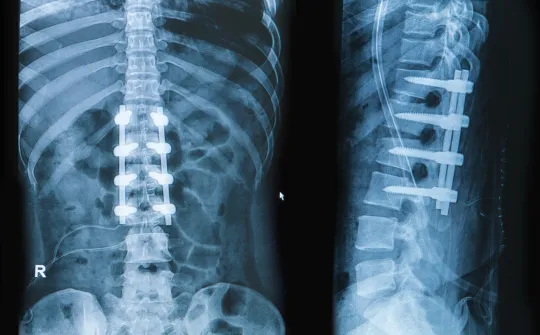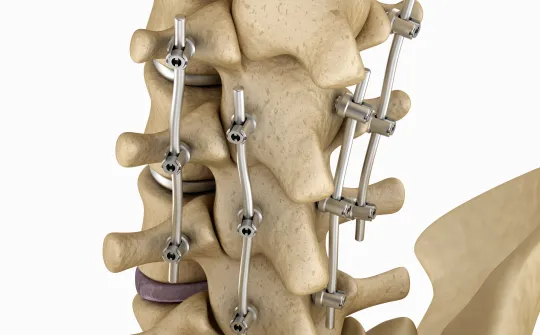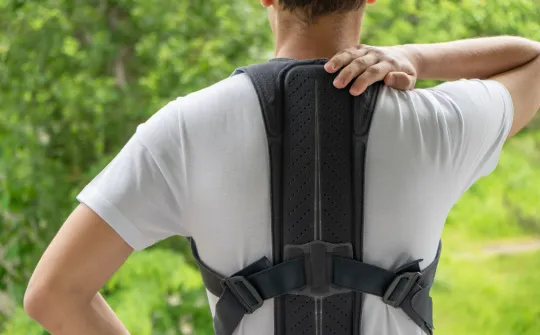
Spinal Fusion Surgery
Stabilize Vertebrae and Eliminate Painful Symptoms with Spinal Fusion Surgery
Spinal fusion is a major surgery that is performed by a board-certified surgeon at our Leander, TX, practice to stabilize sections of the spine that have been damaged by degenerative disc disease, scoliosis, tumors, or other back conditions. During the procedure, your doctor will secure damaged vertebrae together with harvested bone tissue, promoting healthy regrowth. Over time, the bones will fuse together and create a more stable spinal column, preventing further degeneration and painful symptoms. At Orthopaedic Specialists of Austin, our doctors are trained in the latest technology and techniques to provide patients with the highest level of care.

What is Spinal Fusion?
Spinal fusion is a major surgery that can take several hours and often requires an extensive recovery period. The procedure is generally performed to stabilize small sections of the spine in order to correct damaged vertebrae. Spinal fusion is only recommended when the doctor can isolate the exact source of your pain and other conservative treatments have proven ineffective. During the procedure, your doctor will connect and secure damaged vertebrae together using harvested bone tissue. Once healed, the bone tissue will fuse together into a solid piece.
Spinal fusion immobilizes the vertebrae and prevents nerves, ligaments, and surrounding muscles from stretching. This surgical procedure is recommended when the motion between vertebrae is causing painful symptoms. For patients who have pain in their lower extremities in addition to back pain, the doctor can perform a laminectomy in combination with spinal fusion.

The Spinal Fusion Procedure
Before undergoing the procedure, the doctor will isolate the root of your condition by performing a thorough examination and a series of x-rays and scans. Once the issue has been diagnosed, the doctor will discuss the procedure with you, the risks involved, and the recovery, answering any questions you may have to ensure you are comfortable with the procedure.
Spinal fusion can be performed in one of two ways: posterior approach or anterior approach. Although posterior is the approach more commonly performed, the technique chosen will depend on the surgeon's qualifications, the type of back condition being treated, and the location of the affected vertebrae. No matter which approach is taken, the overall procedure can take anywhere from two to three hours. On the day of the procedure, you will be given anesthesia and the doctor will begin the procedure:
Anterior Spinal Fusion:
Posterior Spinal Fusion:
What Conditions Can Be Treated?
Although spinal fusion was originally performed for fractured vertebrae, it has proven successful for a variety of other back conditions, including:
- Degenerative disc disease
- Spinal stenosis
- Scoliosis
- Spondylolisthesis
- Tumors
- Infections

What to Expect During Recovery
It is not uncommon to experience pain and discomfort for the first four weeks following your surgery. Over the course of your three to six month healing period, pain and swelling will gradually decrease. The doctor will often prescribe pain medication to assist you in your recovery, however, those who take narcotic pain medication may not be able to return to work or drive a car.
You will be required to wear a back brace for six weeks to three months after surgery to ensure the spine remains stable. Throughout your healing period, it is vital that you avoid excessive lifting, bending, or twisting. Depending on how your body is responding to the surgery, your doctor will recommend that you begin physical therapy about six weeks after the procedure and continue for the next two to three months to ensure the best outcome.
